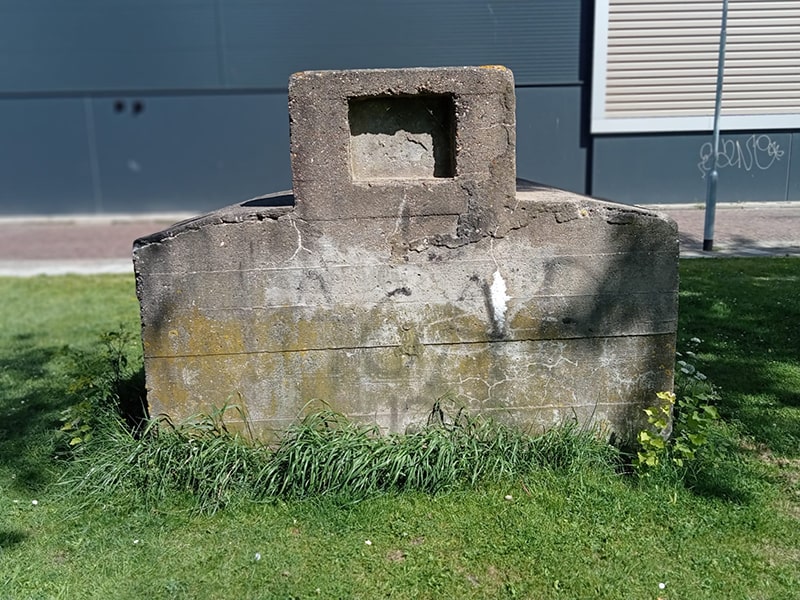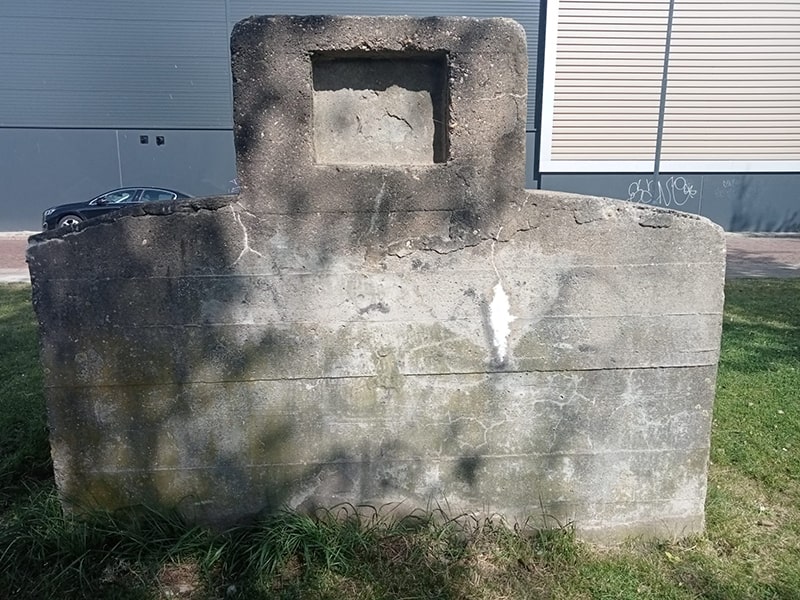
Casus Monuments Vlissingen
In this casus, various monuments were coated; a city wall, several grave monuments, a bomb bunker and the Oostbeer on the inside.
This last monument is partly underground and consists of several old stone tunnels with loopholes.
This Napoleonic monument dates from 1810 and is extremely affected by mold, algae and fine dust. We coated the entire underground system.
Because there is no sunlight underground, we provided the corridors with artificial UVA light to be able to process the photocatalysis.
The grave monuments were processed in various ways, namely: one monument was completely cleaned before coating, one monument was half cleaned and one monument was not cleaned.
This was done to demonstrate what photocatalysis processes and also prevents. An old bomb bunker, located next to the Oostbeer, was coated on one side, without cleaning it first.

Before

One week after

Second week after; the deposit fades more and more

Week 3

End week 3

Beginning of the fourth week after, most of the dead organisms have disappeared from the surface.

Total surface before coating

Total surface beginning fourth week after coating

Before

One week after

Second week after; the deposit fades more and more

Week 3

End week 3

Beginning of the fourth week after, most of the dead organisms have disappeared from the surface.

Total surface before coating

Total surface beginning fourth week after coating
What a confirmation of the completely natural and ultra powerful process of photocatalysis!
The coating will partly fall off with the contamination.
In practice, the surface will always be cleaned first before applying the coating.
In this way, algae, lichens and other fungi as well as fine dust will no longer be able to take root.

Monumental gravestone from the nineteenth century
In a shadier environment the process is slower because there is less direct sunlight.
This is also why it is literally ‘naturally’ good to clean the surface before treatment in order to guarantee an optimal yield for the long term!
In the greenhouse horticulture, the coating was applied in the test phase over a period of more than a year in a very wet greenhouse at high-tech tropical pot plant grower Ammerlaan T.G.I. in Pijnacker.
The coating was applied directly over extremely heavy contamination, consisting of thick layers of dark green algae on a ten-metre high white tarpaulin, attached along the walls of the high greenhouse.
In the course of the weeks after treatment the contamination faded and disappeared until a residual yellow cast was visible in only a few places.
It had literally been converted into dry powder! Of course, the surfaces were also cleaned here first before coating the entire greenhouse.